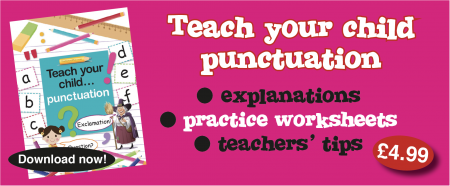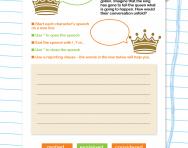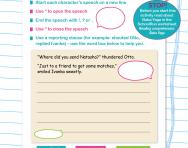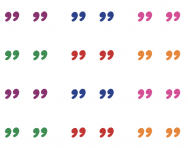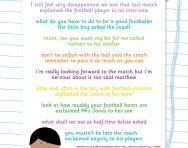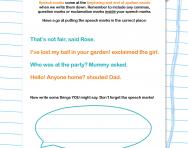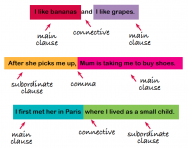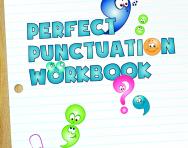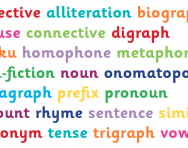What are direct and indirect speech?

What is direct speech?
Direct speech is a sentence in which the exact words spoken are reproduced in speech marks (also known as quotation marks or inverted commas). For example:
"What's that?" asked Louise.
"Our teacher has a broomstick and a black pointy hat in the back of her car. Maybe she's a witch!"
"No, silly! They're for the school play!" replied Louise, sighing.
What is indirect speech?
Indirect speech is when the general points of what someone has said are reported, without actually writing the speech out in full. It is sometimes called reported speech. For example:
When do children learn about direct speech?
Teachers will start to teach children how to set out direct speech in Year 3.
The general rules of direct speech are:
- Each new character's speech starts on a new line.
- Speech is opened with speech marks.
- Each line of speech starts with a capital.
- The line of speech ends with a comma, exclamation mark or question mark.
- A reporting clause is used at the end (said Jane, shouted Paul, replied Mum).
- A full stop goes after the reporting clause.
- If the direct speech in the sentence is broken up by information about who is speaking, add in a comma or question mark or exclamation mark to end the first piece of speech and a full stop or another comma before the second piece (before the speech marks), for example: "It's lovely," she sighed, "but I can't afford it right now." / "I agree!" said Kate. "Let's go!"
When do children learn about indirect speech?
In Year 5, children may be taught a literacy unit that guides them in writing a newspaper article including the use of indirect (or reported) speech. In Year 6, children may be encouraged to use indirect speech when writing a biography or practising further journalistic writing.
When changing direct speech into indirect speech, changes have to be made to a sentence. For example:
- Verb tenses usually shift back a tense (into the past)
- Word order often needs to change
- Pronouns often need to change
- Words indicating place and time need to change
By Year 6 children should be setting out speech and punctuating it correctly in their stories. In fiction indirect speech can sometimes be helpful if a character in a story wants to recount a conversation they have had in the past.
For direct and indirect speech worksheets and activities to help your child put the theory into practice look through our punctuation worksheets.

Give your child a headstart
- FREE articles & expert information
- FREE resources & activities
- FREE homework help
